The Great War Terror- Was The Austro-Hungarian Romfell Fit to Fight?
By Rakhi Anand
3811 Views
The Romfell was developed independently by the officers Captain Hauptmann Branko Romanić and Lieutenant Colonel Simon Fellner, without any involvement of the War Ministry and Army Command.
The Romfell was developed independently by the two officers, Captain Hauptmann Branko Romanić and Lieutenant Colonel Simon Fellner, without any involvement of the War Ministry and Army Command.
Austro-Hungarian Empire
The Austro-Hungarian Empire did not have much faith in the potential of an armoured vehicle and did not show much interest in their development prior to the outbreak of the First World War. Several demonstrations of armoured vehicles were made to the Austro-Hungarian War Ministry and many designs were offered to them. The designs were rejected, along with other armoured vehicle proposals, and the empire was without any armoured cars when it entered the war.
The Great War
War was declared on Serbia in late July 1914, and during that time the Austro-Hungarian Army was not equipped with any armoured trains. Soon the terror created by the Great War made the War ministry understand the importance of an armoured vehicle.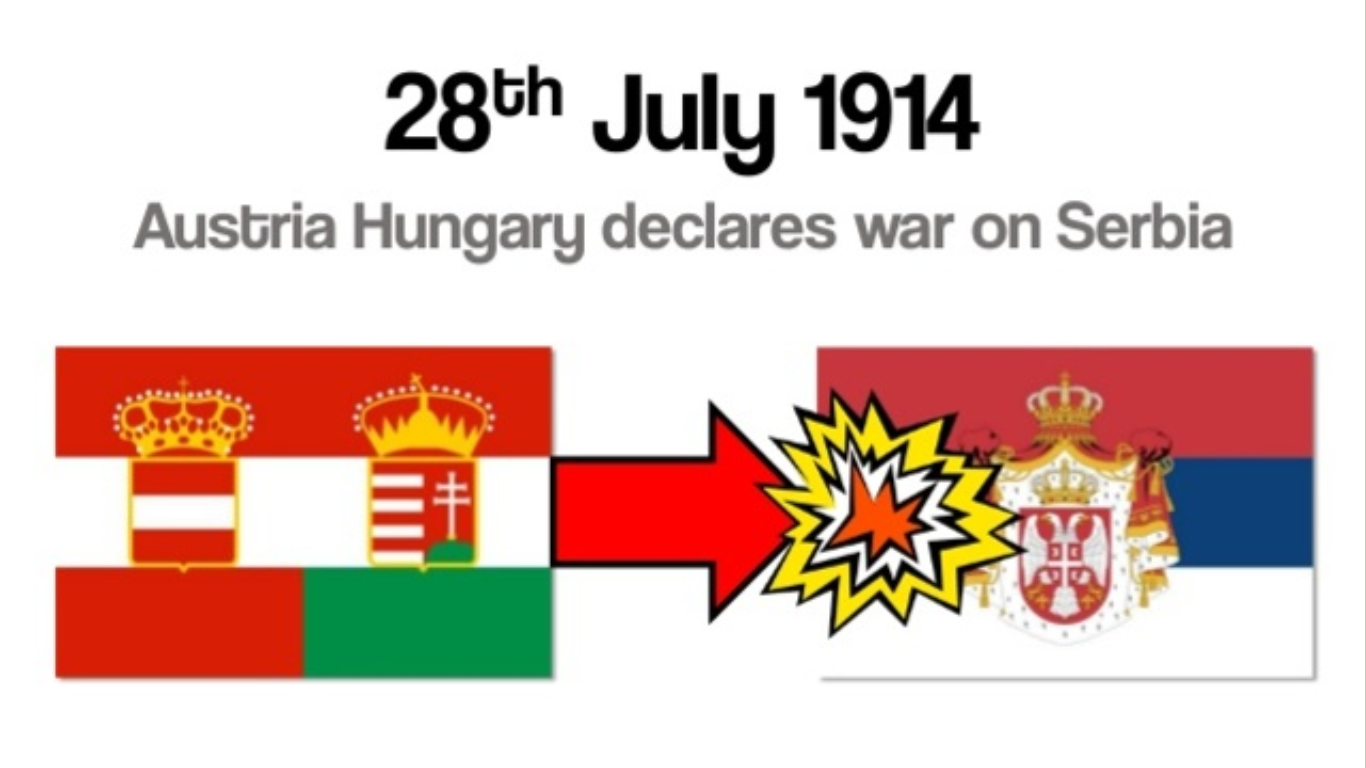
Moreover, the main enemies of the Austro-Hungarian Empire, Russia and Italy had started employing armoured vehicles in war. As the war dragged on, it became very clear to the empire that in order to win the war, it needed armoured vehicles. In the second half of 1915, the troops also encountered Russian armoured vehicles on rare occasions during the war. It was in the same year that a new armoured car was developed in Budapest. This car was called The Romfell.
Early Development
The initial idea for an armoured vehicle came from Captain Hauptmann Branko Romanić. More detailed plans were worked out by Lieutenant Colonel Simon Fellner. The names of the two men were combined to christen the vehicle ‘Romfell’. Development of the first vehicle started in the spring of 1915. 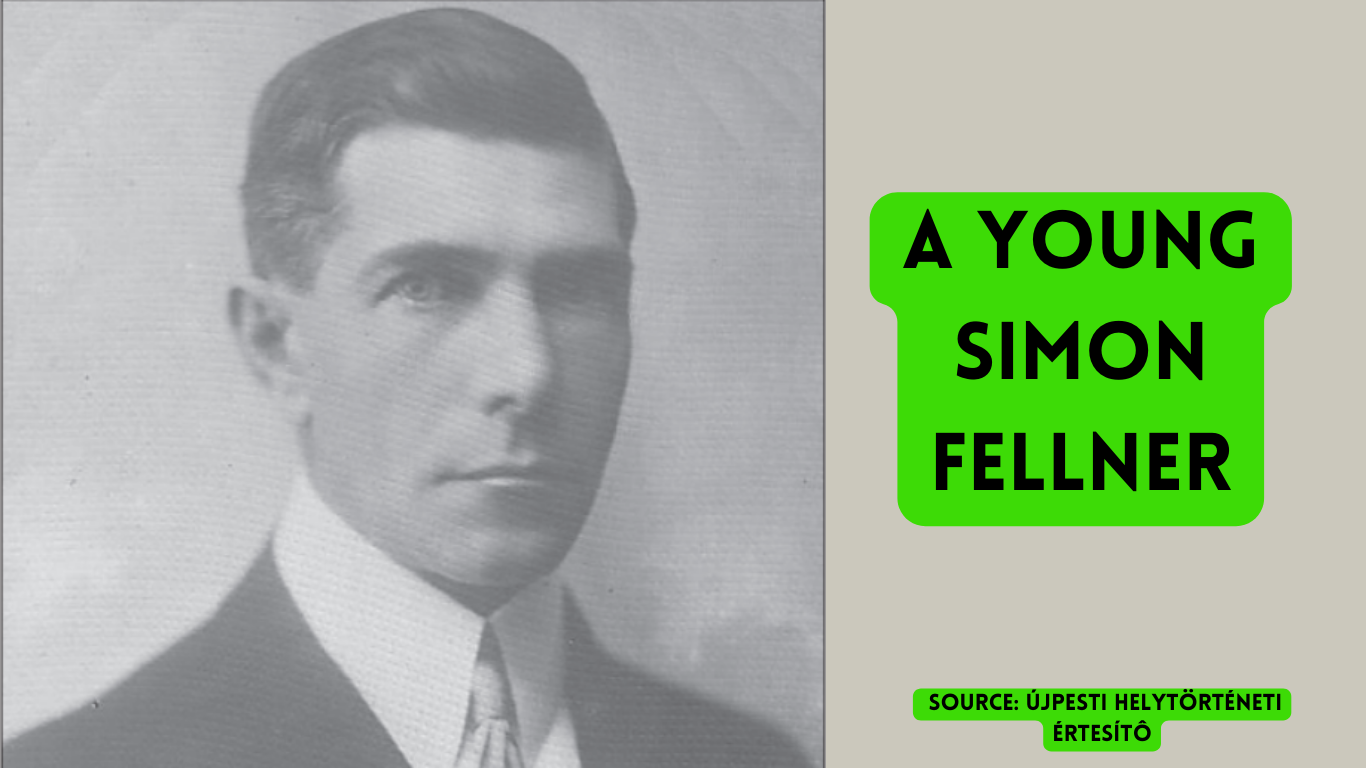
The War Ministry was not informed about the project initially but they found out when a formal request was made to the firm Siemens & Halske for delivery of a wireless radio. The reaction by the Ministry on finding out about the vehicle, was very negative. The conversion of the car into an armoured vehicle was seen as a waste of a perfectly fine car that was badly needed by the authorities.
The car was inspected by Oberleutnant Erich Kurzel Edler, a technical consultant of the War Ministry. His report was very positive and he stated that the car could be put to good use for military purposes and praised the craftsmanship.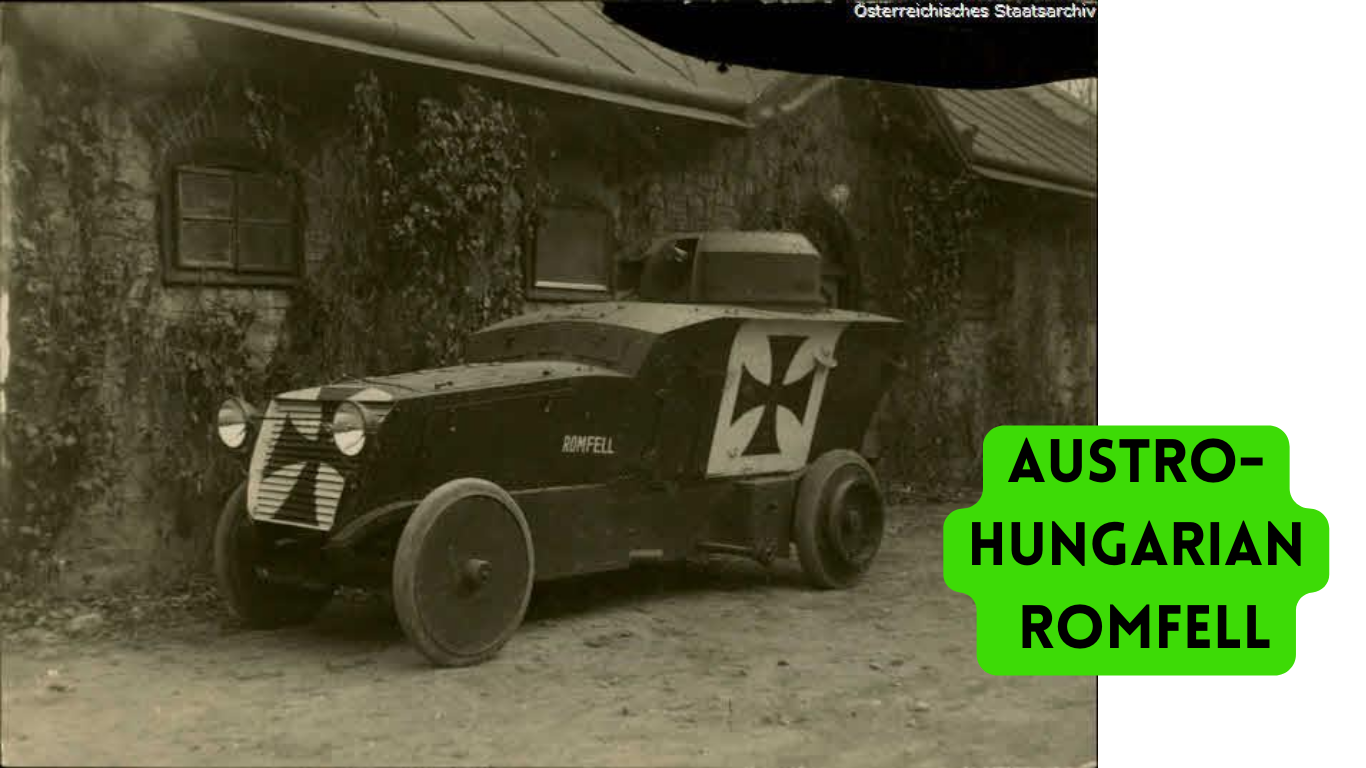
The vehicle was completed by the end of July. On 18th August, the depot officially declared that a Mercedes chassis, registered as “A VI 865”, had been converted after equipping it with armour, and was re-registered as “XI-271”. The report also included a question whether the machine gun would be fitted at the depot or if it would be fitted by the troops to whom the car was supposed to be issued. As was expected, the machine gun was fitted in the depot. When a journalist visited the workshop he made the following report in Sportblatt des Pester Lloyd, on 24th October 1914:
“It was the biggest surprise for the visitors when in a completely locked room, the most important product of the workshop was displayed: an armoured car, developed by Hauptmann Romanić and Oberleutnant Fellner in the military repair workshop, was ready for action. The shape and design of the armour surpasses all the latest vehicles of the foreign make. To honour the builders, the armoured car was named “Romfell”. Hopefully, we will soon hear the good news of the excellent performance of the armoured car.”
A Modern and Distinctive Armoured Car
The Romfell was a one of a kind military vehicle, although by all accounts only one or two were ever built. It had a distinctive inward-sloping body and a circular turret. With disc wheels, solid tires, and radio it was the most modern and appealing armoured car made during the time it was built. In the few photos taken, lies the mystery regarding their handmade production. In a few pics the Romfell can be seen with different radiator grills and wheels. Based on the pics it could be said that either a wartime modification was done on the existing vehicles or there is a possibility that two different vehicles were built.
Development of the Romfell
In 1905, the very promising Daimler armoured car was rejected by the Austro-Hungarian general staff and was deemed not fit for military service. It is believed that the loud noise created by the engine of the vehicle had scared the horse of a general during an official demonstration. Thereafter Emperor Franz Ferdinand declared the vehicles unfit for military operations.
However, after 1914 the Austro-Hungarian Army soon realised the mistake it had committed by not accepting the modern technology. Their greatest enemies, the Russians, had largely developed armoured cars, and the Italians had quickly followed in World War I.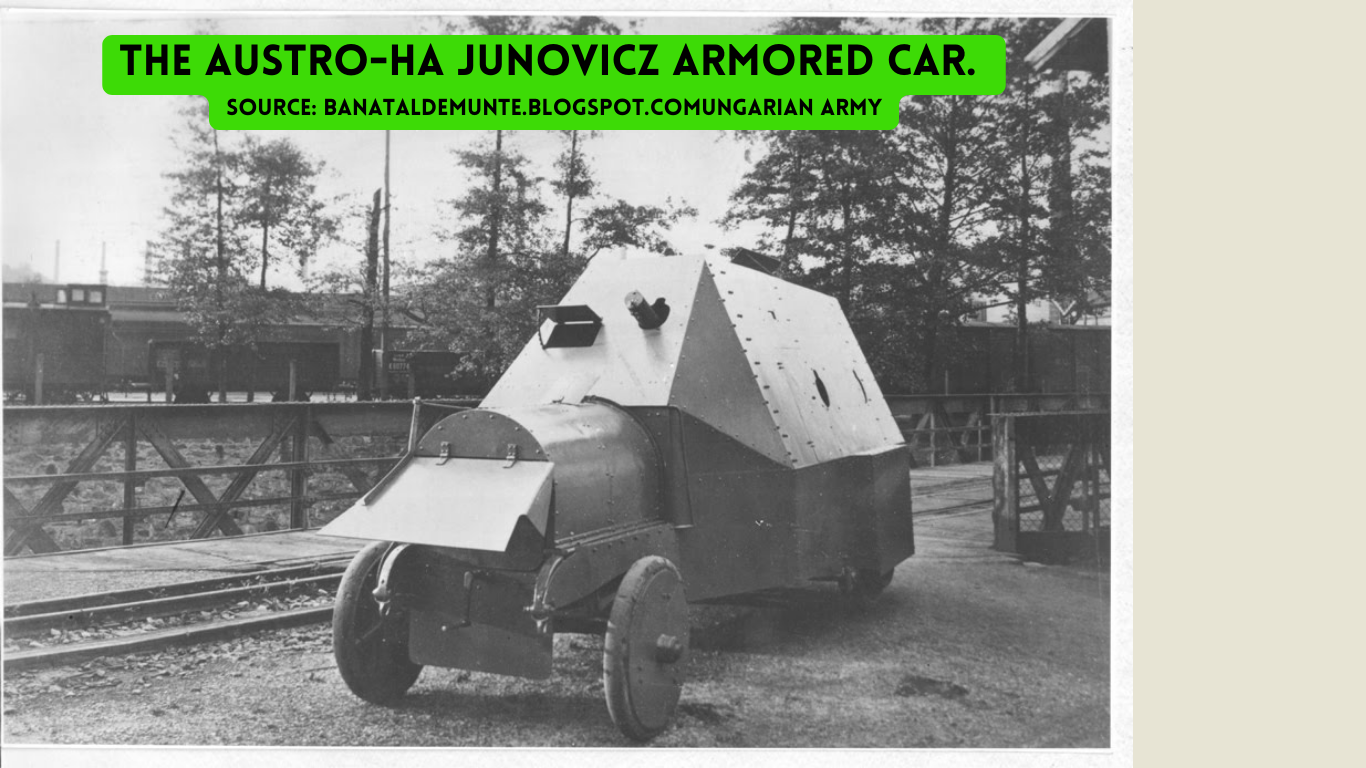
Earlier, the only Austro-Hungarian wartime armoured car that was operational during the wartime was the Junovicz P.A.1. But the vehicle was very crudely made. In contrast to that, the Romfell almost looked more modern and advanced. Built on a commercial car chassis it served well during the conflict.
Like the Junovicz, the Romfell was developed for immediate needs. It was a private initiative starting low in the hierarchy, proposed by officers, Hauptmann Romanic and Oberleutenant Fellner, who took the responsibility of developing an armoured vehicle into their own hands. According to Peter Jung, who had done research on these forgotten vehicles, two models were built and the design was approved by the military. A prototype was authorised, to be delivered in the early summer of 1915. The prototype was tested from September to November.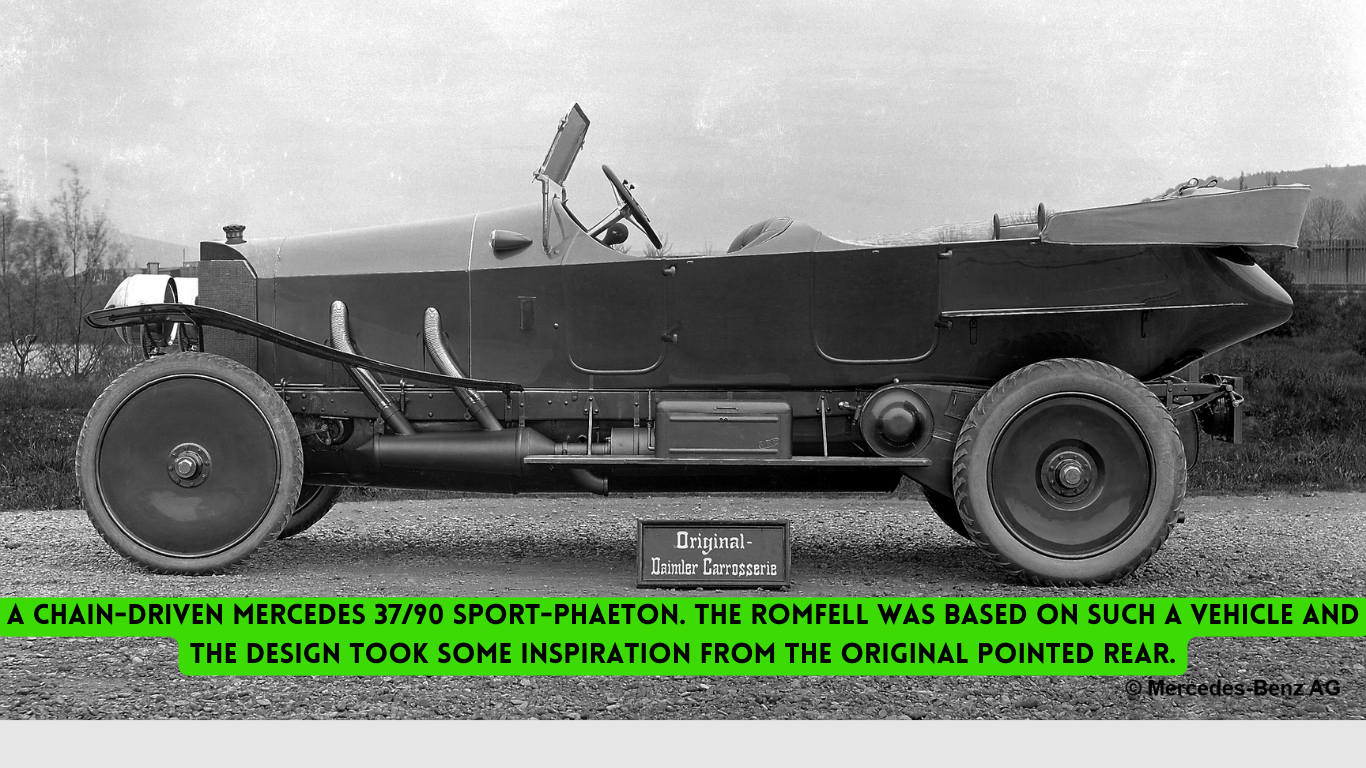
The first model was made on the chassis of a Mercedes Motor Car which was propelled by a 95 horsepower motor. The vehicle looked like a sports car and gave an appealing look to the first armoured car.
The second model which was built in 1917/1918 used a Fiat chassis with a 4-cylinder 75 horsepower engine. The first vehicle was built at the Army's Automobil Ersatzdepot and was ready for trials by August.
Design
The Romfell armoured car had an inwardly curved body, with no right angles or flat surfaces. This inward shape had an advantage during the war. It could bury the ricochet rounds into the ground instead of bouncing them into the air. Thus, the vehicle was considered safer for accompanying infantry or cavalry by the military.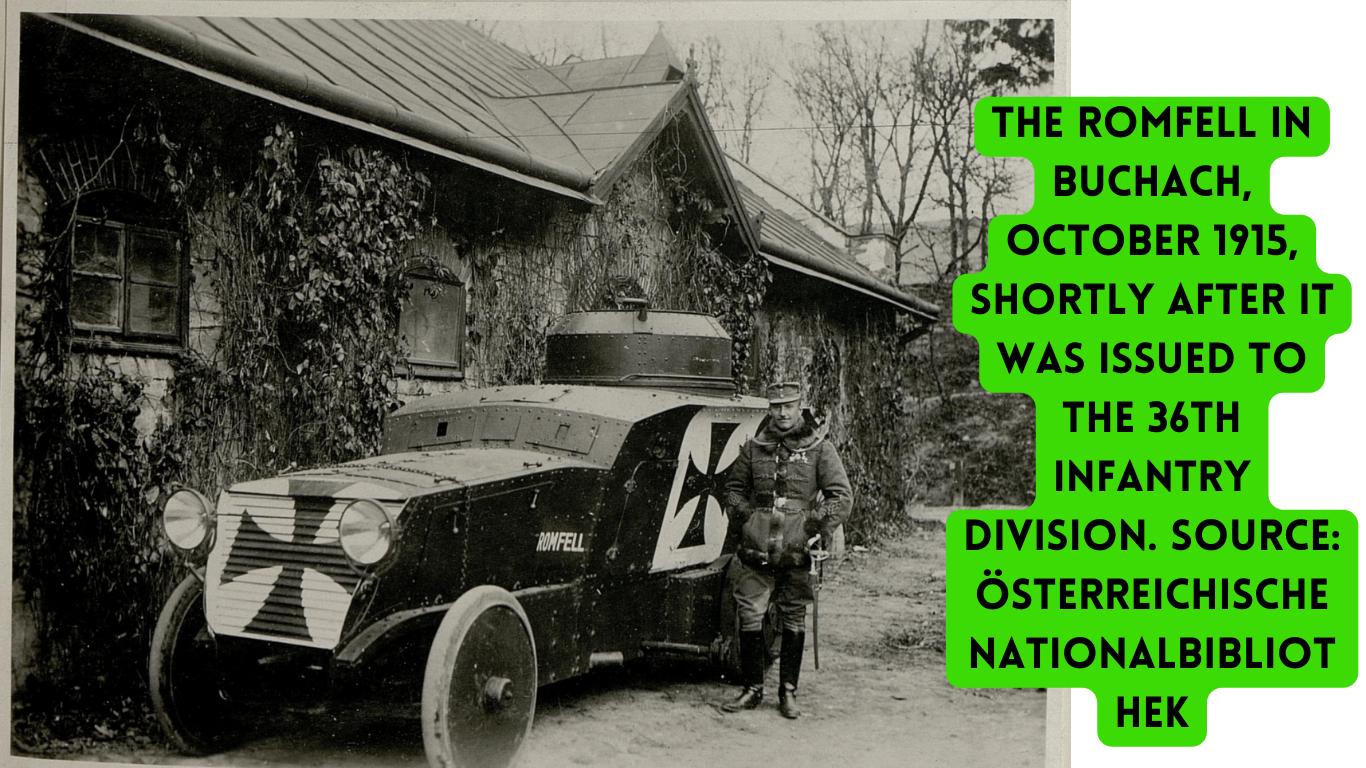
But the machine was too labour-intensive and so this design was not used on other machines. Most armoured cars developed during those days had outward angling flat, slab-sided armour. Weapons had to be mounted on the chassis but the smaller area in the lower part of the chassis of the Romfell was not appropriate for mounting automotive weapons and there was a larger area on the upper part that could seem like a waste.
The armoured body was 6mm in thickness and was riveted with a pronounced reverse rear slope. The driver's compartment had armoured shutters for the driver and the co-driver. There was a central shutter for a second optional machine gun. 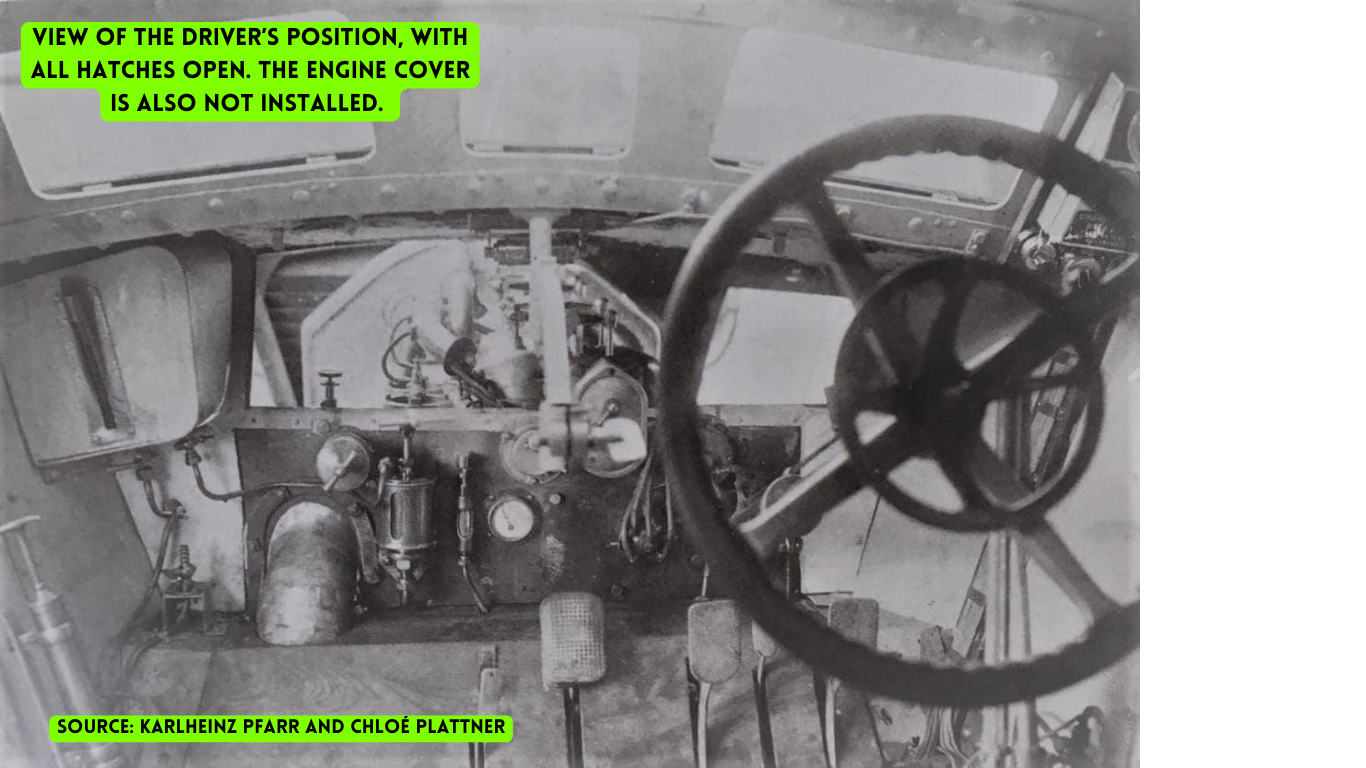
The fully revolving, cylindrical turret was mounted in the centre of the rear of the armoured vehicle. It had a sloped roof and on being buttoned up, there was a single sliding hatch for observation. The machine gun used in the vehicle was an air-cooled Schwarzlose M07/12 which was protected by a gun shield. It had a supply of 3,000 rounds.
As seen in the pics, the gun was able to elevate to nearly vertical, for Anti Aircraft fire. For better mobility in rough terrain, the vehicle had four-wheel drive, dependent spring suspension, and solid rubber tires. Range was estimated to be 100 to 150 km and top speed on road was 26 km/h. Equipment of the vehicle also included a Morse telegraph from Siemens & Halske. A towing hook for a small trailer, also featuring the inwards sloping armour can be seen in the blueprint.
Fate of the Armoured Car
We do not have many details about the operational history of the vehicle. It is assumed that the 1915 vehicle could have been used in both the Balkans and in Russia.
There is a photo of one Romfell clicked in 1918 on the Italian front, as part of K.u.K. Panzer Autozug (armoured car train) No.1. The unit was equipped with two Junovicz P.A.1s and one Romfell P.A.2, apart from a captured Lancia Ansaldo IZ, and an ex-Russian Austin Armored Car.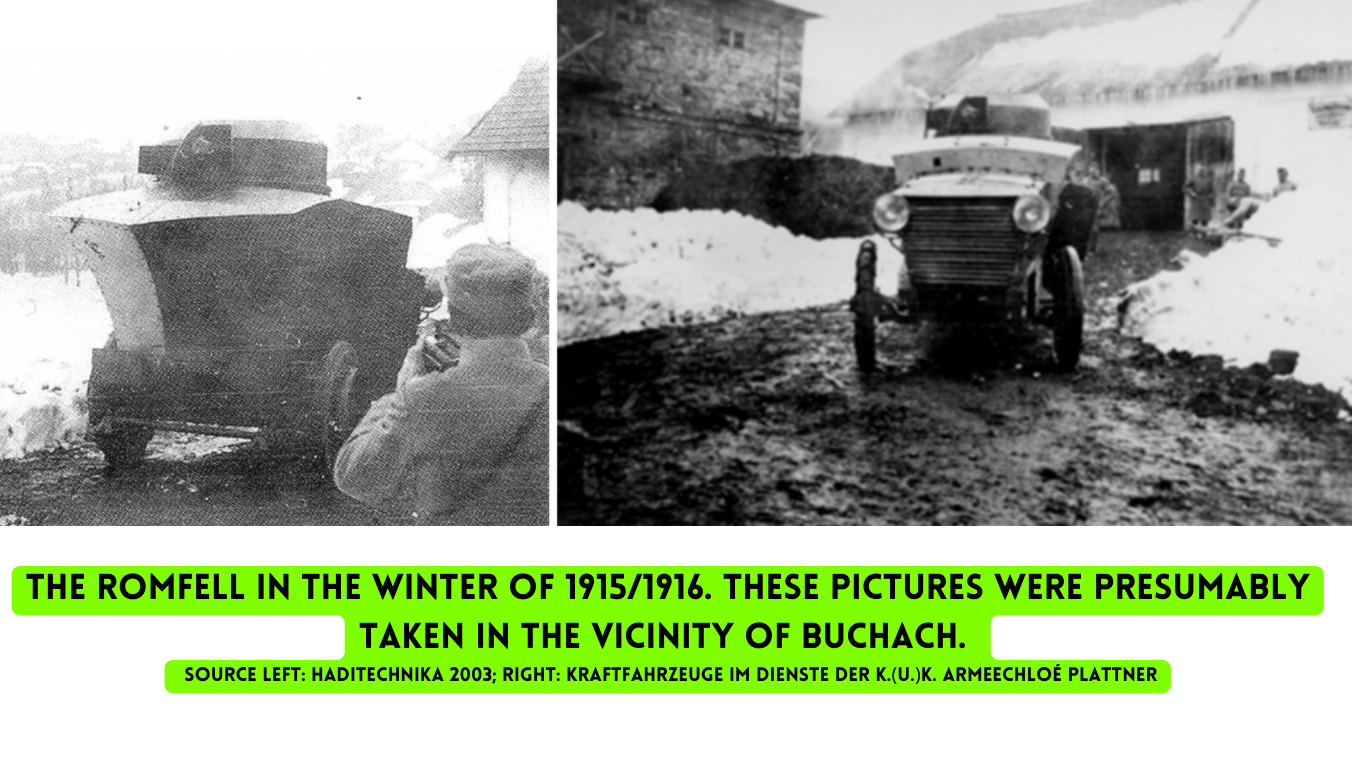
The Unit operated in the vicinity of Udine, on the central Italian Front. The second model, according to Jung, was possibly damaged. The vehicle was rebuilt using the chassis of a captured 2-ton Fiat. It is believed that just before the end of the war, more Romfells were built on these Fiat chassis.
The Romfell may have been appealing and quite impressive, but it was a disappointment in practice. The vehicle was slow and was too heavy for its chassis. It had poor off-road capabilities. Not much is known about the final fate of the vehicles.
Through this article we have shared information about the Austro-Hungarian Armoured Car the Romfell, which was one of the most appealing armoured cars developed during World War I. Our article series ‘Evolution of Military Vehicles’ is our endeavour to bring out the most celebrated vehicles from the military automotive world. To find out more about our latest stories, keep checking our website. In case of any query, feel free to contact us.